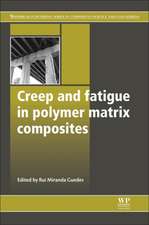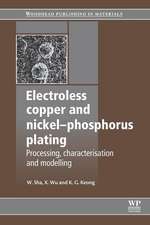Principles of Power Engineering Analysis
Autor Robert C. Degeneff, M. Harry Hesseen Limba Engleză Paperback – 31 mar 2017
The book explains from first principles the expressions that predict the performance of transmission systems and transformers. It then extends these concepts to balanced three-phase systems and unbalanced systems. The authors proceed to introduce symmetrical component analysis of transmission systems, three-phase transformers, and faulted systems. They also describe the design of untransposed transmission lines and discuss other analysis component systems, such as Clarke component networks.
Despite the tremendous changes that have occurred in the electrical industry over the last forty years, the need for a fundamental understanding of power system analysis has not changed. Suitable for a one-semester course, this book develops the necessary concepts in depth and illustrates the application of three-phase electric power transmission.
| Toate formatele și edițiile | Preț | Express |
|---|---|---|
| Paperback (1) | 585.27 lei 6-8 săpt. | |
| CRC Press – 31 mar 2017 | 585.27 lei 6-8 săpt. | |
| Hardback (1) | 1399.62 lei 6-8 săpt. | |
| CRC Press – 20 dec 2011 | 1399.62 lei 6-8 săpt. |
Preț: 585.27 lei
Preț vechi: 688.56 lei
-15% Nou
Puncte Express: 878
Preț estimativ în valută:
111.100€ • 117.77$ • 92.54£
111.100€ • 117.77$ • 92.54£
Carte tipărită la comandă
Livrare economică 17 aprilie-01 mai
Preluare comenzi: 021 569.72.76
Specificații
ISBN-13: 9781138075061
ISBN-10: 113807506X
Pagini: 452
Ilustrații: N/A CR Book; 200 Illustrations, black and white
Dimensiuni: 178 x 254 mm
Greutate: 0.45 kg
Ediția:1
Editura: CRC Press
Colecția CRC Press
ISBN-10: 113807506X
Pagini: 452
Ilustrații: N/A CR Book; 200 Illustrations, black and white
Dimensiuni: 178 x 254 mm
Greutate: 0.45 kg
Ediția:1
Editura: CRC Press
Colecția CRC Press
Cuprins
Transmission Line Characteristics. Single-Phase Transformers. Balanced Three-Phase Systems. Unbalanced Three-Phase Systems. Symmetrical Component Representation of Transmission Lines. Symmetrical Component Representation of Transformers. Symmetrical Component Fault Analysis. Design of Untransposed Transmission Lines. Other Component Systems. Appendices. Index.
Notă biografică
Robert C. Degeneff is the founder and president of Utility Systems Technologies, Inc., which builds electronic voltage regulators and power quality mitigation equipment and provides consulting to the utility industry. A recipient of the IEEE Herman Halprin Award, Dr. Degeneff is also a professor emeritus at Rensselaer Polytechnic Institute, a PE in New York, a fellow of the IEEE, and chair of the IEEE working group that wrote the C57.142 guide. His research interests include computing the transient response of electrical equipment, power quality, and utility systems planning.
M. Harry Hesse was a professor emeritus at Rensselaer Polytechnic Institute. A Fulbright fellow and recipient of the Power Engineering Educator Award from Edison Electrical Institute, he was also a PE in New York and a fellow of the IEEE.
M. Harry Hesse was a professor emeritus at Rensselaer Polytechnic Institute. A Fulbright fellow and recipient of the Power Engineering Educator Award from Edison Electrical Institute, he was also a PE in New York and a fellow of the IEEE.
Recenzii
"This graduate-level textbook provides power engineers with a new well—written book on how to analyze three-phase power networks. It combines all the essential formulas and methods necessary to achieve a basic power system into one source and will be an excellent book for a class on power engineering."
—IEEE Electrical Insulation Magazine
—IEEE Electrical Insulation Magazine
Descriere
This classroom-tested, graduate-level text presents the basic tools required to understand the components in an electric power transmission system. It explains from first principles the expressions that predict the performance of transmission systems and transformers. The authors then extend these concepts to balanced three-phase systems and unbalanced systems. They introduce symmetrical component analysis of transmission systems, three-phase transformers, and faulted systems. They also describe the design of untransposed transmission lines and discuss other analysis component systems. A solutions manual is available for qualifying instructors.
























